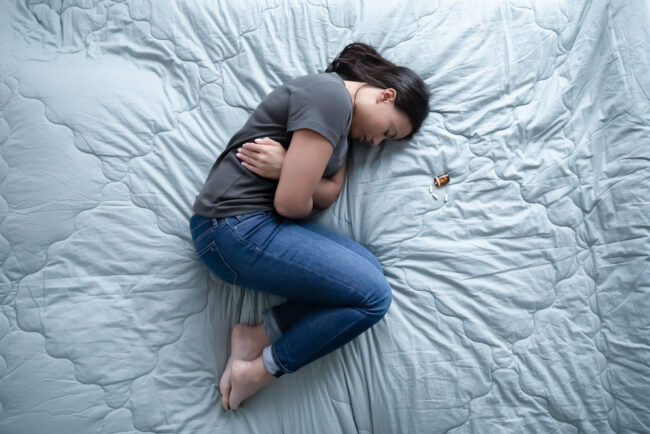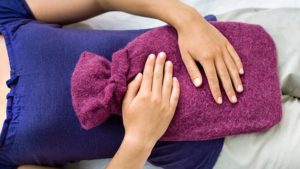
Painful menstruation or dysmenorrhea is a common and sometimes difficult problem. Menstrual cramps can begin one or two days prior to your period and continue throughout the menstrual cycle. Some women experience headaches, nausea, vomiting and diarrhea.
Most women who experience dysmenorrhea do not have an underlying reproductive problem such as uterine fibroids, endometriosis or an infection.
 What are menstrual cramps?
What are menstrual cramps?
The uterus or womb is the reproductive organ that houses the fetus during pregnancy. This pair shaped organ is largely smooth muscle. After ovulation the uterus releases the chemical mediator prostaglandin, which signals the uterus to contract. If prostaglandin levels are excessive, contractions can be severe and lead to abdominal, low back and thigh pain. Prostaglandin also triggers the uterus to contract during childbirth.
Childbirth relieves painful periods – it’s a bit of a mystery.
After childbirth and nursing, menstruation returns. Often, menstrual cramping diminishes or disappears. Why? Perhaps pregnancy, childbirth and nursing help to normalize prostaglandin levels or the bodies’ sensitivity to prostaglandin diminishes.
We’re not sure why this problem reduces with childbirth. We also don’t know why women in their teens and twenties are more prone to dysmenorrhea than women in there 30’s and 40’s.
Western medicine treats this issue with NSAID’s (non steroidal anti inflammatory drugs) including Advil and Ibuprofen. Some prefer fish oil as a holistic alternative.
How can acupuncture help women with painful periods?
Acupuncture can help regulate the endocrine system. In turn, acupuncture supports balanced uterine function with the appropriate prostaglandin production.
Japanese acupuncturist Kiiko Matsumoto has helped me to develop a comprehensive approach to hormonal balance and reproductive health. I apply gentle pressure to specific reflex points. Tenderness on hormonal reflexes reflects a hormonal system that is out of balance.
For example, a woman who suffers from dysmenorrhea may have a positive ovary or uterus reflex. With the use of palpation, I find which system is out of balance. As the treatment progresses, I re-check the reflex points to monitor progress.
In Chinese medicine, disease indicates stasis; that is, with disease, both Qi and blood do not move well through the problem area. Acupuncture helps to restore the smooth flow of energy and blood to the pelvic basin, abdomen and uterus.
As a Five Element Acupuncturist, my goal is to resolve these issues by treating the whole person, not just the symptom. Regular treatments lead to increased health and vitality.
The contents in this article are not meant to be diagnostic or prescriptive. Women’s hormonal problems and dysmenorrhea is often complex and a physician should always be consulted before choosing a course of treatment.
